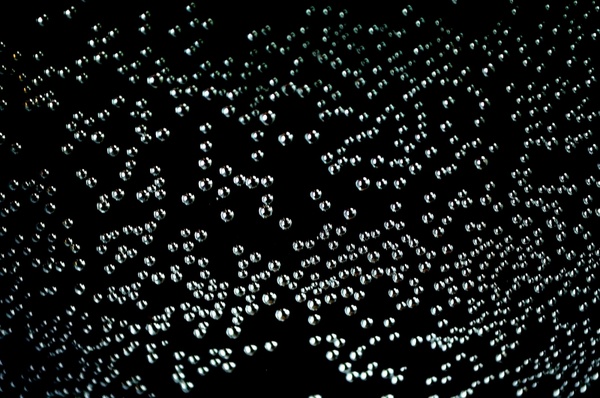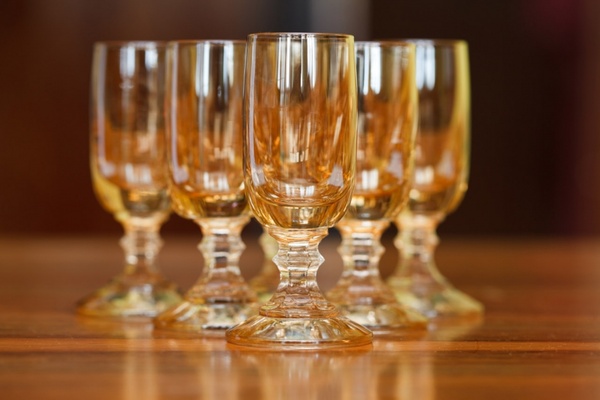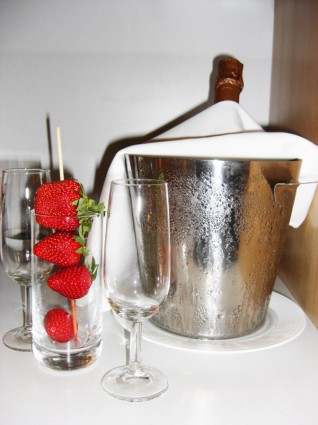
by Lorri | Dec 26, 2018 | UnCorked
On New Year’s Eve and Day we most likely will be toasting with a glass of bubbly.
There are many drinks that will put a little fizz in the glass, but today’s focus is on the most famous, Champagne. It begins the same as any other wine: grapes are picked, pressed and fermented. Then the magic begins with the blending. The winemaker will taste separately fermented vats from individual vineyards to create the ideal recipe. Many consider this an art rather than a skill.
The carefully blended wine is then bottled along with a small addition of yeast and sugar. This crucial step creates a second fermentation resulting in a naturally carbonated wine. The yeast feed on the sugar, and the tiny bubbles of carbon dioxide that remain are trapped in the wine.
But the process isn’t over.
This wine will then be left on its “lees” (dead yeast) for a few weeks, or in some quality Champagnes, even months. This gives the wine time to absorb the yeasty, rich aromas that give Champagne its unique flavor we love so much. The next step is a bit of a magic trick — removing the tiny yeast particles without getting rid of the bubbles. To do this, the bottles are arranged in hinged wooden racks in cool, dark cellars and are slowly inverted neck down. For about two months each individual bottle (sometimes up to 40,000 bottles a day) will be turned by hand. As the orientation of the bottle changes, the yeast particles settle in the neck of the bottle.
In the final step, the necks of the bottles containing the dead yeast sediment are put into a freezing solution. This ice plug is shot out of the bottle known as “disgorgement” and then topped with a “dosage,” a mixture — usually a small amount of sugar — to replace the missing volume. Finally, the bottles are closed with the wire and cork.
As you ponder the price of amazing bubbly, don’t forget how much love and attention went into the bottle along with the handcrafted spirit behind this artisan craft.
THE VALUE
- NV Pol Roger Brut Reserve, France (about $64 retail)
THE SPLURGE
- Perrier-Jouet Fleur de Champagne, France (about $195 retail)

by Lorri | Dec 28, 2016 | UnCorked
It’s becoming somewhat of an inside joke among my friends to exchange tips of our trades. Of course I am one to barter wine information for thought-provoking conversations in medicine, food, agriculture, law, finance and just about all life offers. Over the past several weeks of holiday celebrations, many of the questions asked of me were about Champagne. So, with the celebratory theme sure to be a part of next week’s chats I searched out a few conversation starters involving Champagne that you may want to use.
- The pressure in a bottle of Champagne is 70 to 90 pounds per square inch. That is three times the average amount of pressure in your car tire. This is not just a notable piece of trivia but a dangerous fact to keep in mind when opening a bottle.
- Legend has it that Marilyn Monroe at least once took a bath in Champagne, using 350 bottles to fill her bathtub. That’s 262.5 liters, which would fill an average bath of 270 liters to the top. Since the average woman would displace around 50 liters of liquid it would seem either Marilyn wasted 66 or so bottles of Champagne or she was in a very big bath.
- Gout de Diamants’ Taste of Diamonds Champagne was released with a price tag of $1.8 million. The bottle was adorned with Swarovski crystals in the center of a diamond-shaped pewter design resembling a Superman logo. It was a limited edition bottle designed by Alexander Amosu and was one of the most expensive bottles of bubbly in the world.
- If you find yourself in need of instructions to build a Champagne flute cascade for your New Year’s party, here’s what you’ll need: Base level — 60 glasses, Level one — 30 glasses, Level two — 10 glasses, Level three (top) — 4 glasses.
- On average, 28,000 bottles of Champagne are served at Wimbledon each year.
- How many standard 750-mL bottles’ contents would fit in these unique bottle sizes? Nebuchadnezzar (20 bottles), Balthazar (16 bottles), Salmanazar (12 bottles) Methuselah (8 bottles) Jeroboam (4 bottles) Magnum (2 bottles)
- For my technically scientific friends: The patterns and bubbles in the glass are a vibration rate of the gas trapped at the nucleation point and the growth rate of the bubbles outside. There are actual teams of experts offering complex equations to explain this differential pattern.
And now here’s what to drink while you’re impressing your friends with your newfound Champagne trivia.
THE VALUE
- NV Lucien Albrecht Rose Cremant d’Alsace, France (about $21 retail)
THE SPLURGE
- NV Piper Heidsieck Brut Reims, France (about $40 retail)

by Lorri | Nov 2, 2016 | UnCorked
This past week Arkansas had an astonishing group of French Champagne winemakers in our midst. Each showcasing the Champagnes and sparkling wines of their wineries. It was obvious as we shared in the tastings that most of us adore the elusive bubble of a sparkling wine or Champagne. I’ve never actually met a wine drinker who didn’t enjoy the celebratory drink.
Today, sparkling wine is valued for its luxurious and prestigious reputation. It adds a bit of flair to any occasion and popping open a bottle can make a humdrum dinner feel like a special occasion. But this wasn’t always the case. Long before French monk Dom Perignon is thought to have called out, “Brothers, brothers, come quickly, for I am tasting stars!” bubbles were considered a wine fault. Froth belonged to beer but in wine it was considered unrefined.
The idea of a sparkling wine was not new, as it was noted by the Romans, and the Bible refers to “wine that moveth” but it wasn’t until the late 17th century in Champagne, France, when advances were made in glass production and wine stoppers, that bubbly as we know it today became possible.
So, as you savor your next glass of bubbly, keep in mind the long historic journey it took for the celebratory drink to be in your hand.
THE VALUES
- NV Chandon Etoile Rose, California (about $32 retail)
- NV Chandon Blanc de Noirs, California (about $15 retail)
- NV Chandon Rose, California (about $15 retail)
THE SPLURGES
- Moet & Chandon Brut Imperial, France (abut $49 retail)
- Moet & Chandon Nectar Imperial, France (about $50)
- 2006 NV Moet & Chandon Grand Vintage, France (about $64 retail)
- NV Krug Grande Cuvee, France (about $179 retail)
- NV Ruinart Blanc de Blanc, France (about $74)

by Lorri | Dec 30, 2015 | UnCorked
New Year’s Eve is the ideal occasion to enjoy Champagne. Whether it’s the intriguing, elegant bubble in the glass or the romance of midnight toasts, it is unquestionably the drink of celebrations. Champagne adds traditional sparkle.
From Dom Perignon’s famous “Brothers, brothers, come quickly for I am drinking stars” to war-fueled discovery that coal burns hotter and thus produces stronger glass than wood, Champagne has held our fascination for centuries.
Champagne is made from a specific combination of grapes grown in France’s cool-climate vineyards. By law, only wine produced in the Champagne region of northeast France can be called Champagne. But many quality sparkling wines are made using the same combination of grapes and produced using the same method.
Pinot noir provides structure, body and a delicate fruit character while chardonnay contributes floral and fruit components. Pinot meunier is responsible for the hallmark aroma.
The complex process of producing sparkling wine is the main contributing factor when it comes to the cost of higher-quality bottles. The longer and slower the winemaking process, the more expensive and complex the final wine style will be. If you add the bubbles quickly by artificial methods, the result is a simple style, while adding them slowly, naturally and elaborately results in a more complex wine and a higher price tag.
For many of us, it simply isn’t New Year’s Eve without the famous sparkling wine.
So whether you are chanting the midnight countdown on New Year’s Eve or quietly celebrating with intimate friends, bubbly is perfect for toasting the beginning of a new year!
THE VALUE
- NV Piper Sonoma Brut, California (about $20 retail)
THE SPLURGE
- NV Veuve Clicquot Ponsardin, Reims, France (about $65 retail)

by Lorri | Aug 19, 2015 | UnCorked
I adore Champagne. I can drink it in the spring, summer, fall or winter. It pairs seamlessly with almost any food including, of all things, popcorn. But with this adoration comes a dilemma, most of us can’t afford it as an everyday drinking wine. Even the most humble of true Champagnes can cost $40 to $50 a bottle.
So how do we enjoy the bubbles without breaking the bank? My best advice is look outside of the Champagne region. Many of these bubbly wines are produced using the same technique as Champagne and sometimes even the same grapes.
The United States is quickly moving forward as a contender in offering value priced bubbly with just as much elegance. The label will read “Traditional Method” or “Methode Champenoise” because using the word “Champagne” is restricted outside of the French region of Champagne. Most American producers follow the same production methods and even the same traditional recipe of chardonnay, pinot noir and pinot meunier. Washington state is a region to keep your eyes on for not only the quality of its chardonnay and pinot noir grapes but for the price value of its products.
THE VALUE
- NV Domaine Ste. Michelle Brut, Washington (about $14 retail)
THE SPLURGE
- NV Treveri Cellars Brut, Washington (about $17 retail)
Spanish winemakers have been bottling bubbly for hundreds of years. Cava, the Spanish take on Champagne is much different, as they use indigenous grapes (macabeo, xarel-lo and parellada) but most are produced in the same method as Champagne. The resulting wine may not offer Champagne’s signature complexities but it does have a reliable, fresh fizz at half the price. This price savings makes Spanish sparkling a good pick for large parties or for cocktails such as the bellini and mimosa.
THE VALUE
- NV Segura Viudas Aria Estate Brut, Spain (about $13 retail)
THE SPLURGE
- NV Segura Viudas Brut Reserva Heredad, Spain (about $26 retail)
Germany, as with most of its wine, particularly riesling, seems to be a forgotten gem for the American wine drinker. Germany is a huge consumer and producer of sparkling wine, known as sekt or schaumwein in German. It is estimated that just over one in five bottles (22 percent) of the sparkling wine produced worldwide is consumed in Germany, more than any other country.
THE VALUE
- NV Schloss Biebrich Sekt, Germany (about $10 retail)
THE SPLURGE
- NV Von Buhl Sparkling Riesling, Germany (about $28 retail)




